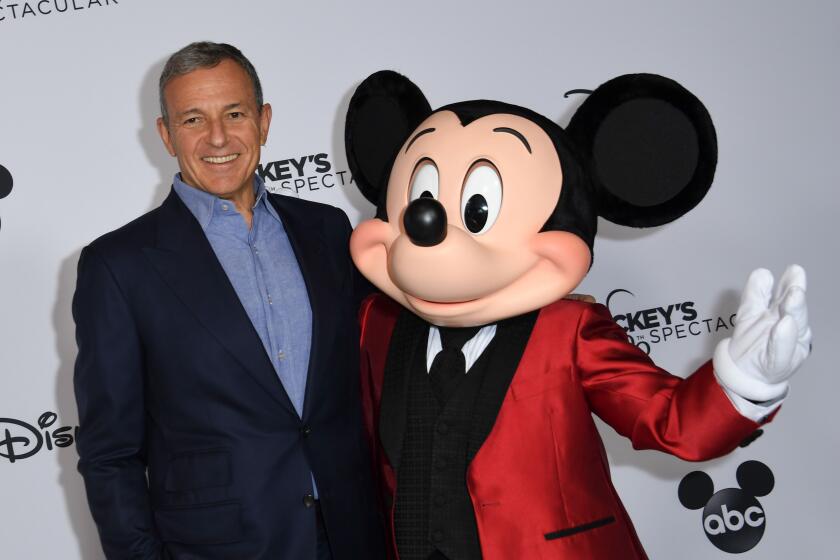Review: The beautiful and thrilling ‘Carol’ belongs among the best movie love stories
“Carol” universalizes from the particular, and it does so with exceptional skill and style. This is a love story between two women set at a time and place when that relationship was beyond taboo, but as its bravura filmmaking unfolds, those specifics fade and what remains are the feelings and emotions that all the best movie love stories create. And make no mistake, “Carol” belongs in that group.
Impeccably acted by Cate Blanchett and Rooney Mara as the women in question, with an exquisite look captured by cinematographer Ed Lachman, “Carol” has been made under the complete and total control of Todd Haynes, a director who has in a sense alternated between two different kinds of provocation.
Several of Haynes’ films, such as “Superstar: The Karen Carpenter Story” (made largely with Barbie dolls) and “I’m Not There” (where six actors played Bob Dylan), confound with their nontraditional narrative techniques.
But other of his works, including the Julianne Moore-starring “Far From Heaven” and the James M. Cain “Mildred Pierce” adaptation for HBO, have a visual look that the technicians of Hollywood’s Golden Age might envy. In these films, as in “Carol,” it’s the way the decidedly modern sensibility of the narrative meets classic style that is the point.
Superbly adapted by Phyllis Nagy, “Carol” is based on “The Price of Salt,” a 1952 novel by Patricia Highsmith, best known for unnerving psychological thrillers such as “Strangers on a Train” and “The Talented Mr. Ripley.” The subject matter was so controversial in its day (“The Novel of a Love Society Forbids,” trumpeted the paperback) that Highsmith wrote the book under a pseudonym and didn’t acknowledge authorship for 40 years.
Haynes understands that swooningly beautiful traditional technique bolstered by thrilling performances creates the greatest impact. He has made a serious melodrama about the geometry of desire, a dreamy example of heightened reality that fully engages emotions despite the exact calculations with which it’s been made.
Blanchett’s and Mara’s characters represent two poles of romantic experience. These women are united in their unsettling attraction to each other as well as the instinctive knowledge that the ramifications of a serious relationship will be unnerving and exhilarating.
After a brief but freighted prelude (which Haynes acknowledges was inspired by the British classic “Brief Encounter”), the story proper begins during the 1951 Christmas season with a focus on young Therese Belivet (Mara), a salesgirl in the toy department of New York department store Frankenbergs.
Therese has a serious boyfriend named Richard (Jake Lacy) who wants to marry her and has bought them steamship tickets for France. But we can sense that this young woman, who harbors half-formed aspirations to be a serious photographer, is not as sure as he is.
Enter, truly like a vision out of Vogue, ultimate sophisticate Carol Aird (Blanchett), searching for a Christmas present for her 4-year old daughter Rindy. The two lock eyes across the harried sales floor, and nothing will ever be the same again.
At Therese’s suggestion, Carol buys a train set for Rindy, but, flustered, she leaves her gloves behind, and when the young girl mails them back, Carol invites her first to lunch and then to visit her at the impressive home in New Jersey she shares with Rindy and her soon-to-be-divorced husband, Harge (Kyle Chandler).
When the film switches to Carol’s point of view, we learn that she has had same-sex affairs before, most notably with old friend Abby Gerhard (Sarah Paulson). But nothing prepares her for the inexorable impact Therese has on her. “What a strange girl you are,” she says, almost in awe, at that first lunch. “Flung out of space.”
Things soon get more complicated for Carol and she decides, as fictional people are wont to do, to take a drive west. She asks Therese if she wants to go as well, and the resulting trip will have powerful repercussions that will complicate and confound both their lives. “Tell me you know what you’re doing,” Abby asks Carol. “I don’t,” she replies. “I never did.”
It would be difficult to exaggerate how completely inside their respective roles Blanchett and Mara are or how beautifully they play off each other with their combination of elegance and tentativeness. Because Carol is the more experienced character, Blanchett’s role has somewhat greater complexity, but the wordless looks of palpable yearning they exchange are superbly done on both sides.
Veteran cinematographer Lachman, who often collaborates with Haynes, beautifully shot “Carol” in Super 16mm because he wanted some of the grain that film stock of the period would have offered. His superb images are often done through car windows or rain-misted glass, emphasizing our voyeuristic interest in how this tale unfolds.
With Cincinnati standing in for early 1950s New York, and production designer Judy Becker, set decorator Heather Loefffler and top costume designer Sandy Powell doing altogether remarkable work, “Carol’s” lush but controlled visual look is completely intoxicating. This is filmmaking done by masters, an experience to savor.
-----------
‘Carol’
MPAA rating: R, for a scene of nudity/sexuality and brief language
Running time: 1 hour, 58 minutes
Playing: Arclight, Hollywood; Landmark, West Los Angeles











